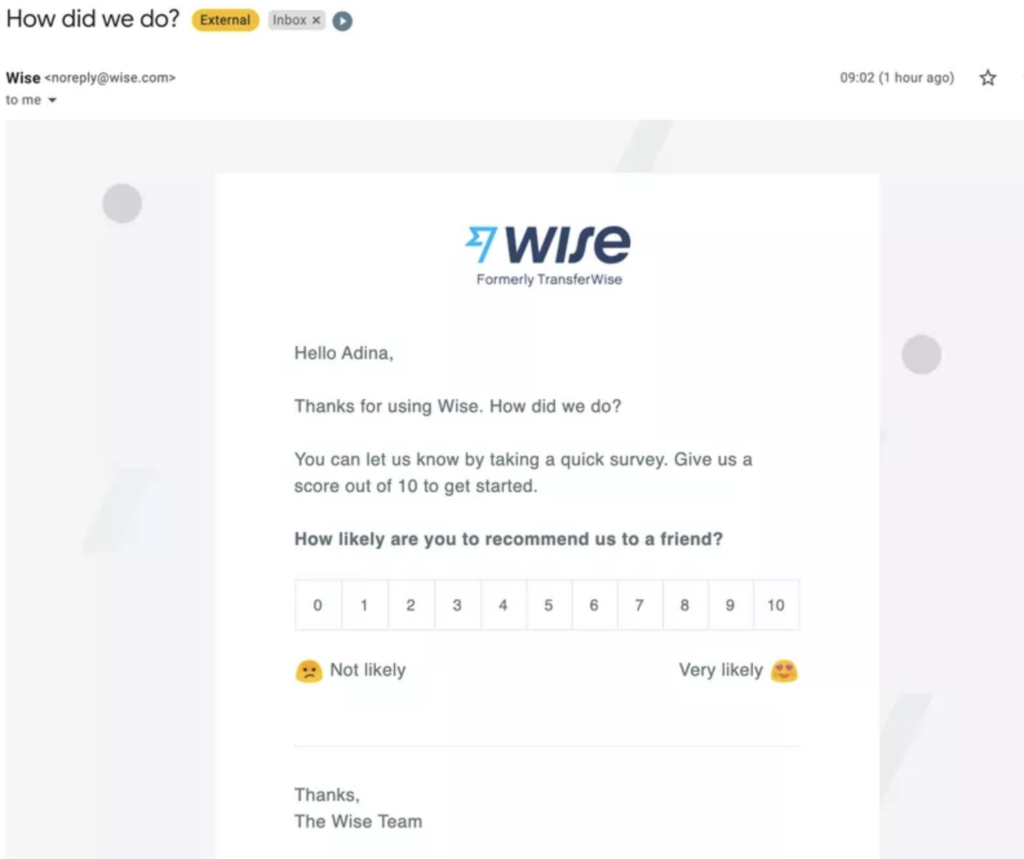Effective Customer Engagement: How Does It Work and What Does It Take?

Strong customer engagement carries many benefits. Here’s a breakdown of how to set it up and tools you can use
To improve customer retention and sales, you need a quality product, great service, excellent customer support…
… and high customer engagement.
In many ways, building engagement can feel tougher than building a great product. But it’s also key to growing and retaining your customer base as engaged customers are also customers interested in purchasing.
That’s why we’ll be taking a closer look at what customer engagement really means, as well as some strategies (including AI in marketing) you can use to improve it.
What is customer engagement?
“Engagement” is most often talked about in social media marketing, where it’s often boiled down to comments, likes, and shares.
But that’s only one part of the picture. A more accurate customer engagement definition covers every way a company builds a relationship with its customer base.
In other words, while customer engagement marketing includes social media content, it also relies on other strategies, such as:
- Offline events
- Loyalty programs
- Spending incentives and rewards
- Community forums
- Feedback forms and surveys
- Customer support
Basically, customer engagement refers to any method (aside from purchases) that helps customers actively interact with your brand.
But why do you need engagement?
How can a customer engagement strategy help?
Choosing and applying a strong customer engagement marketing strategy brings multiple benefits.
Stronger customer-brand relations
Social media allows us to build powerful relationships. Think about your favorite influencer: you’ve probably never met, but you feel a strong connection with them. The right engagement strategy helps people feel a similar level of connection with your brand.
And social media isn’t the only way: other strategies, like in-app communication, excellent customer support, and loyalty programs, can all strengthen your brand-customer relations. As a result, you have loyal customers ready to buy more products and recommend them to others.
Improved user experience
You can learn about your customers’ interests, preferences, and concerns by engaging them in conversation through comments, reviews, feedback, or surveys. This knowledge allows you to make data-driven decisions that improve user experience.
What’s more, when you have a good customer-brand relationship, customers are more forgiving of minor flaws in their experience, similar to how we tolerate our friends’ stupid jokes or annoying habits. This makes your customer base more stable.
Increased brand perception and value
The right engagement strategy helps customers follow your company news and connect with your values almost subconsciously.
For example, suppose you often mention in social media and your app that your cosmetic products are sustainable and you offer discounts for packaging returns. If a customer’s friend asks, “Hey, do you know any sustainable cosmetics brand?” they would be more likely to recommend you.
Increased conversion
Higher engagement helps you sell more because customers trust you. Stronger customer engagement ultimately increases your chances of converting your leads since people are more likely to buy from a company they feel connected to.
Today’s AI-powered customer engagement software doubles down on personalization to increase engagement. With AI behind you, you can ensure pitch-perfect email marketing campaigns and seamless customer support in a fraction of the time.
In a nutshell, engagement drives your sales through strong customer-brand relations, good UX, positive brand perception, and increased conversions. Still, you can only get these benefits if you choose the right customer engagement management tools and strategies.
Which customer engagement strategies are effective?
We suggest focusing on one or two of the strategies below if you’re just starting out, although experience shows that combining them brings the best results. It’s also a good idea to conduct market research to find out which have a better track record of success.
Creating a clear and authoritative brand voice
A clear brand voice helps customers distinguish you from competitors and connect with your values. What’s more, it’s great for storytelling, which engages customers who share your values and builds a sense of community around the brand.
Personalizing the customer experience
Customer experience and customer engagement are intertwined. No matter how engaging your reels and posts are, if your personalization is poor, you’ll lose out. Research suggests that 63% of customers will stop buying from you.
Creating unique and valuable content
Combining the latest marketing and social media trends with information tailored to your audience is a go-to method for creating engaging content. For example, Nike used a trending National Geographic voiceover style for its ad showing a toddler exploring the world in Nike shoes.
Launching a loyalty program that provides free benefits
Loyalty benefits are a classic way to keep users coming back. You can offer good old cashback from every purchase program or something more interesting, like completing simple tasks in the app to earn points.
Creating high-quality and responsive customer support
Remember the importance of customer experience for high engagement? High-quality customer support shapes this experience.
In a 2023 consumer survey, over half of respondents define fast response times and issue resolution during their first interaction as the most important aspects of customer experience. To make sure you’re covered, set up your support to offer first-rate service.
Making it clear that their opinion counts
Both positive and negative feedback shows that your customers want to engage — handle it properly, and the chances of them becoming loyal rise by almost 50%. “Properly” means you reply to all reviews, encourage customers to leave feedback, and act on feedback clearly to show that customers’ opinions matter.
All these strategies can easily align with other marketing activities. And to prove that they really do work, let’s explore some real-life applications.
Examples of customer engagement implementation
Take a look at how these successful companies are using customer engagement marketing strategies to grow their customer base.
Hyper-personalization from Spotify
We’ve already seen how personalization is key to high customer engagement. Spotify takes it one step further — They don’t just suggest playlists based on customer preferences and listening habits, but they also personalize details like playlist titles.
Feedback collection with Wise
It’s great to feel that your opinion has had an influence. So when customers see a company react to their feedback, they’re more interested in engaging. For companies, the trick is to answer all feedback promptly and keep email or in-app surveys short and relevant.
Wise uses a simple survey scale to collect valuable data and engage customers without wasting their time.

Starbucks loyalty program
A loyalty program is always a good way to engage customers, and Starbucks has practically turned it into an art form.
Owners of a Starbucks Card or users of its app earn and accumulate stars from every purchase, which they can spend on a drink, meal, or bag of coffee beans. And if you reach Gold, you get even more perks on the house (along with possibly a nice, shiny gold Starbucks card).
Automated email support with AiSDR
Automated emails are one of the best ways to keep customers engaged in two ways. First, you can send valuable content, surveys, and company updates in a snap. Second, AI-based software can support your customers by answering common questions and sharing relevant tips and tutorials without constant human input.
AiSDR is an AI-powered sales assistant that can work with your inbound leads, talk to prospects, and even create personalized, tailored email campaigns. This increases your customer engagement with significantly less effort from your human SDRs.
Of course, just because these customer engagement marketing examples work for other companies doesn’t mean they’ll work for you.
To drive your own success, you need to optimize these strategies for your needs and audience.
How to optimize your engagement strategy
Regardless of the specifics of your marketing strategy, you can ensure it will work effectively by following these steps.
- Understand your audience and offer the right strategy to address the specific customer needs. A good joke, a specific value, or new knowledge will have an effect when used with proper aim.
- Anticipate and head off roadblocks by analyzing what could stop your strategy from being effective. This could be your team’s capacity or budget.
- Map your customer journey to understand when the strategy or particular tactics will work best (e.g. at the lead nurturing stage, after a demo, or post-purchase).
- Personalize and optimize content to deliver only the most relevant and valuable information to each customer.
- Implement customer feedback loops to pinpoint flaws and possible improvements.
- Test and measure your strategy’s effectiveness with relevant metrics, then adapt it to meet changing customer needs.
These steps take time, but the payoff is more than worth it. You’ll also get there faster and more easily with customer engagement tools.
Handy software for customer engagement
Here’s a shortlist of some of the best customer engagement software for different purposes.
AiSDR
AiSDR is a tool for automated engagement as it can perform most routine tasks, from qualifying leads to writing prospecting emails and answering common lead questions.
Qualaroo
Qualaroo leverages AI for customer engagement by smartly collecting customer feedback. The tool helps you get results by targeting the right users with the right questions, collecting real-time feedback, asking fun and polite questions, and providing AI-based analytics.
ProProfs Survey Maker
This tool is perfect for creating and sending surveys to your customers. You can use over a hundred templates for surveys, polls, quizzes, popups, or in-app surveys, customize them with your colors and logos, and share them via a link, social media, or website.
Google Analytics
Needless to say, Google Analytics is one of the most convenient tools for understanding how customers interact with your content. Combining this with social media analytics tells you all you need to know about customer behavior.
Segment
Segment is an AI-powered customer data platform that helps you collect, clean, and use data for marketing and sales purposes. By cleaning and segmenting data, you can get accurate insights into customer interests and needs, as well as get the best out of your other automation tools.
Mixpanel
Mixpanel is a simple and powerful product analytics tool for testing your strategies and customer engagement solutions. One of the best ways to use it is for A/B testing. Mixpanel’s Experiments report analyzes how the test variants influence your metrics in a few clicks and helps you make data-driven decisions.
Win your customers’ hearts with top-notch customer engagement
Customer engagement is critical for your company’s sales and customer relations — The more engaged your customers are, the greater their loyalty, interest, and willingness to invest in your products. Nevertheless, choosing, optimizing, and combining different engagement strategies is a complex and ongoing process requiring effort from a whole marketing team.
AiSDR is your ticket to creating AI-powered customer engagement fast without the human overhead. It’s an AI-powered SDR that accelerates marketing strategy by automating routine tasks and giving your team more time for creative work and decision-making.
Book a demo to see how AiSDR and AI in marketing can accelerate your engagement and sales.
FAQs
What is customer engagement?
Customer engagement is the ongoing interaction between your business and its customers, which helps to build a positive and lasting relationship.
What defines effective customer engagement?
Effective customer engagement can be measured by metrics, such as:
- Customer satisfaction (CSAT)
- Net promoter score (NPS)
- Customer retention rate
- Churn rate
- Average revenue per user (ARPU)
- Conversion rate
- Customer lifetime value (CLV)
- Social media engagement (likes, shares, comments)
- Click-through rate (CTR)
By combining these metrics, you can evaluate how effective your customer engagement activities are and whether you need to rethink or improve them.
What are the key components of successful customer engagement strategies?
Key components of successful customer engagement strategies include:
- Personalized customer interactions
- A seamless customer experience
- Proactive communication
- Data-driven decisions
- Customer feedback collection and analysis
- Value-added content and customer benefits
- Emotional connection
- Integration of customer needs and preferences
- Performance measurement
Using these components when choosing, building, and applying a strategy will help increase customer engagement.
Why is customer engagement crucial for businesses?
Customer engagement is essential for business as it helps to:
- Boost customer loyalty and build stronger brand connections
- Drive repeat purchases
- Enhance brand advocacy
- Increase conversion and revenue
- Improve customer experience and satisfaction
Engagement allows you to build a strong relationship between your brand and the customer and thus increase sales.








![[GPT Spotlight] Sales GPT](https://aisdr.com/wp-content/uploads/2024/06/Hero-Image-AiSDR-Sales-GPT-GPT-Spotlight-AiSDR-blog-hero-image.webp)


